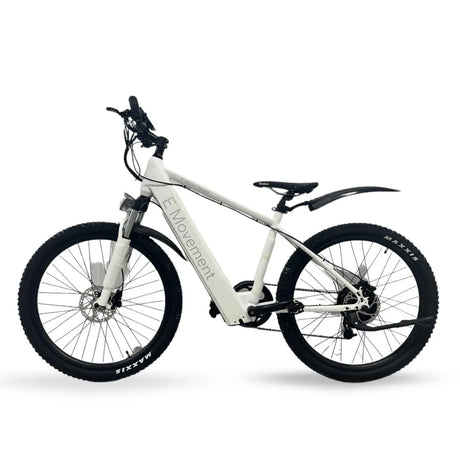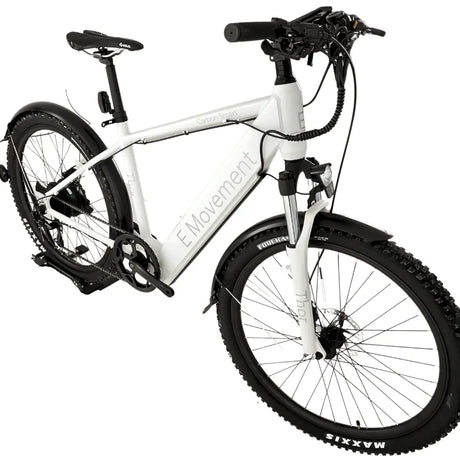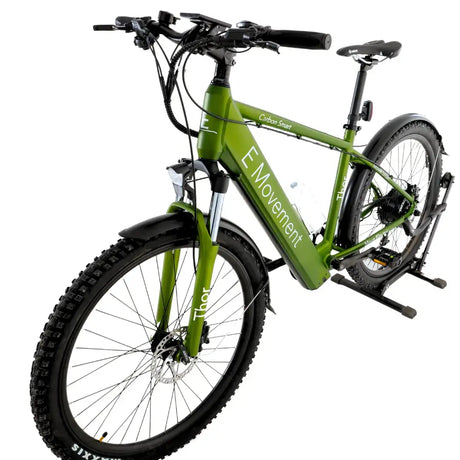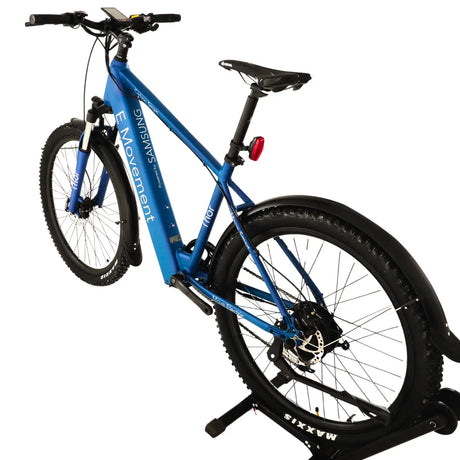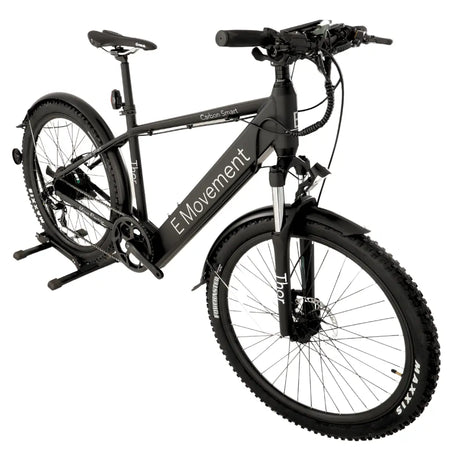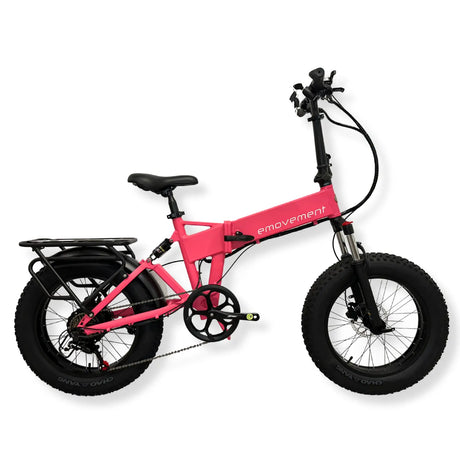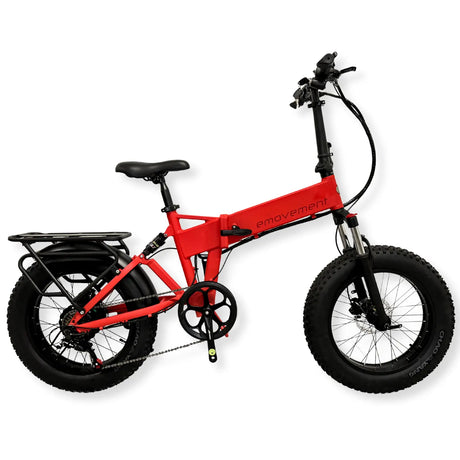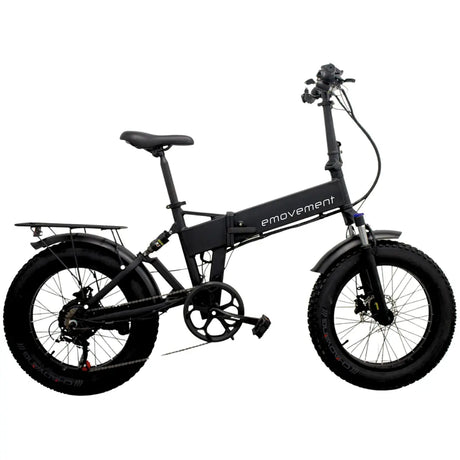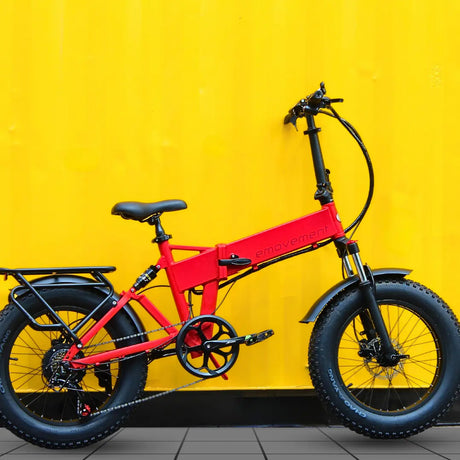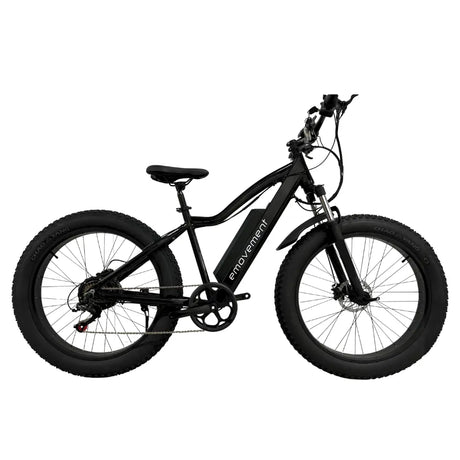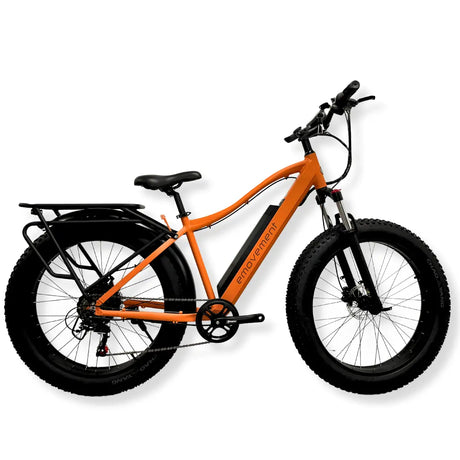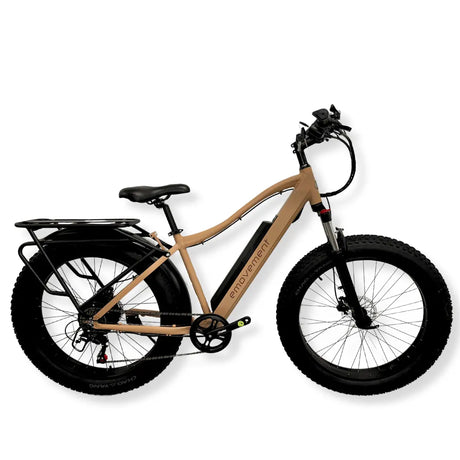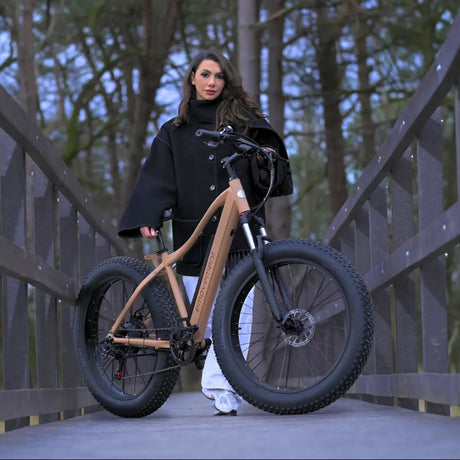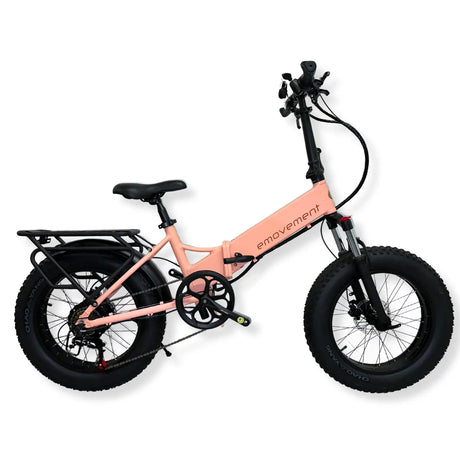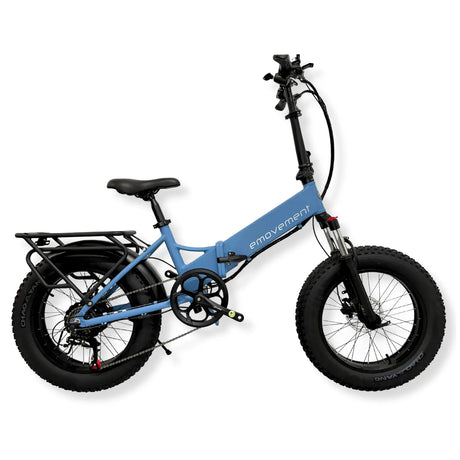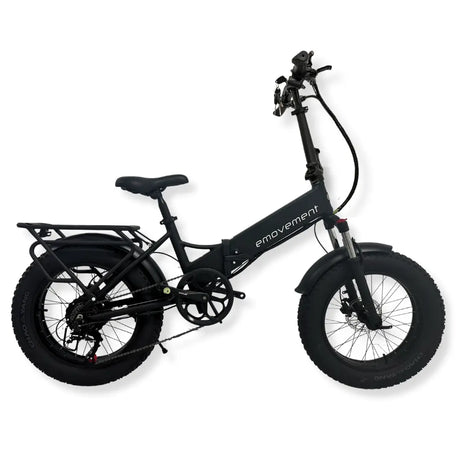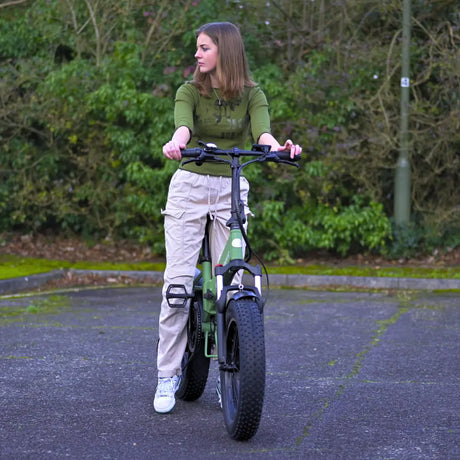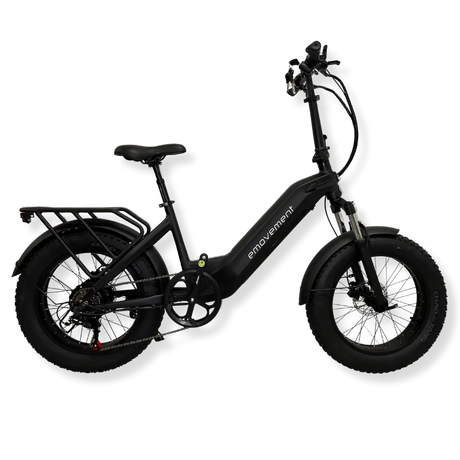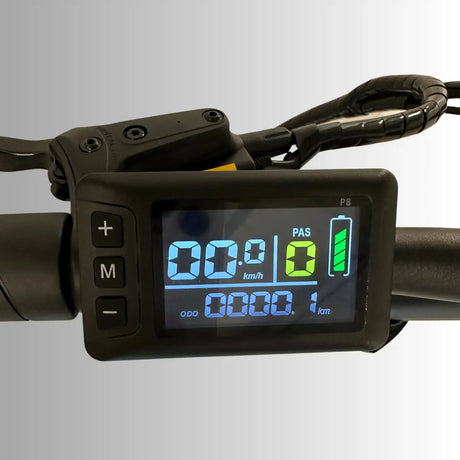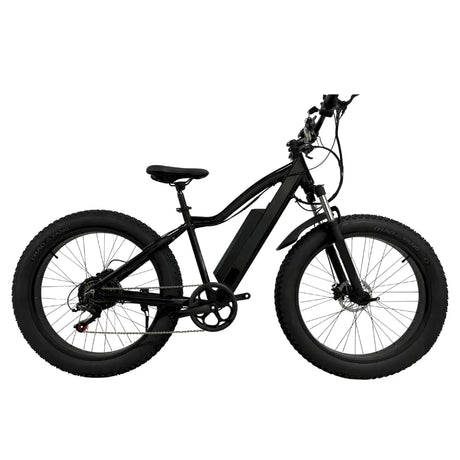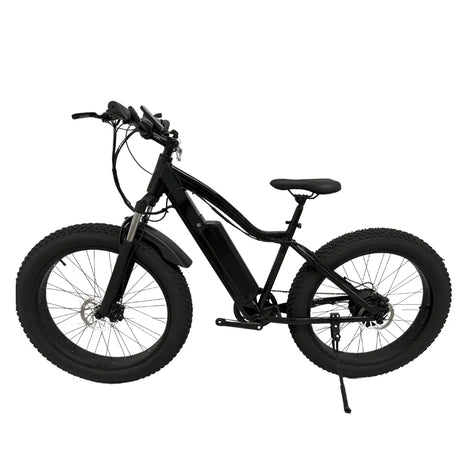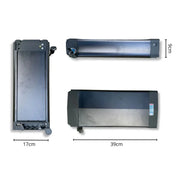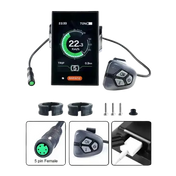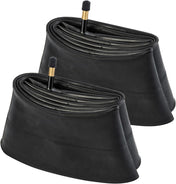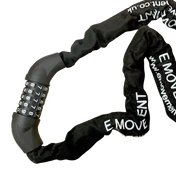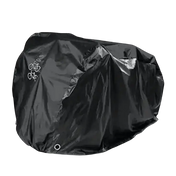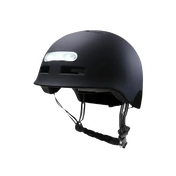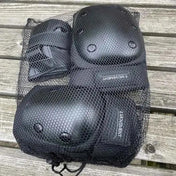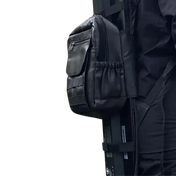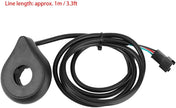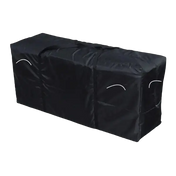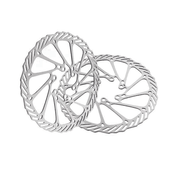When you’re listing factors to consider when buying an e-bike, brakes may not be the first thing that comes to mind. But anyone who has had to stop quickly in the rain or down a steep hill knows to the contrary, brakes matter more than you think.
Most modern e-bikes have two types of brakes: mechanical and hydraulic. They appear similar at first glance. Each uses a disc (called a rotor) to halt the bike. Both are situated close to the wheel and similarly stop the bike when you pull the brake lever. However, the internal functioning is different. This difference will help you understand how your e-bike feels, how it performs, and how secure it is to ride.
This blog will guide you through all you need to know. So, let’s begin with the basics:
What are Disc Brakes?
A disc brake system consists of three primary parts:
-
The round piece of metal that is affixed to the wheel.
-
A caliper that looks like a clamp holding brake pads.
-
A brake lever, the one you squeeze on your handlebar.
When the lever is pulled, those pads inside the caliper clamp down on the rotor. That drag slows your wheel and eventually helps in stopping your bike.
The disk brakes are further divided into two types: Mechanical disk brakes and hydraulic disk brakes.
Mechanical Disc Brakes, Instinctive and Reliable
Mechanical disc brakes use a steel cable to function. It is mainly on older traditional bikes. Here is how it works:
-
You pull the brake lever.
-
The cable pulls and engages the brake pads.
-
The further you pull, the more braking power you have.
It is a manual system that helps you keep control of your bike. However, it may become rusty if you don’t know how to store an electric bike.
Benefits of Mechanical Disc Brakes
Here are a few reasons why many riders would prefer mechanical disc brakes.
Easy To Maintain And Adjust
If you’re cool with a multi-tool and an Allen key, you’ll be just fine with these brakes. Understanding how tight or loose the cable should be, or which pads to use, is enough. It doesn’t require advanced knowledge.
Cheaper To Repair and Replace
Mechanical brakes are also commonly less expensive. Cables are inexpensive and are easily available at your nearby bike shop.
Great On Flat or Smooth Roads
If you’re going to ride slowly and don’t carry much weight, mechanical brakes will be just fine. They’ll stop you. However, they require a little more hand effort.
Disadvantages of Mechanical Disc Brakes
More Hand Strength is Needed
The heavier your bike, or the faster you’re moving, the more pressure you’re going to need to put on the levers. Over the long run, or on emergency stops, that can add up.
Cables Stretch and Wear
Cables don’t stay perfect forever. They stretch, rust, or fray. Unless you are vigilant with adjustments, this impacts braking performance.
Not as Smooth or Responsive
The feel can be a bit harsh. You pull that lever, and there’s a second before you sense the braking force in force. It’s not bad — but it’s not exactly buttery smooth either.
Hydraulic Disc Brakes: Powerful and Modern
Hydraulic brakes rely on fluids rather than hand strength to complete the job. Here is how it works:
-
You pull the lever.
-
That force sends fluid down a hose.
-
The fluid pressure forces pistons in the caliper to move.
-
The pads are squeezed against the rotor by the pistons.
The whole system is closed and exactly calibrated. It is not dependent on your hand strength. Therefore, most UK’s best step-through electric bikes are equipped with hydraulic brakes.
Advantages of Hydraulic Disc Brakes
Many modern e-bike manufacturers have turned to hydraulic brakes. Here are some of the most common reasons:
Less Effort, More Stopping Power
You hardly have to put any pressure on that lever, and the bike comes to a stop quickly. Great for going long, or riding in traffic, or when you’re packing a little extra weight.
Better on Rainy Days and Muddy Roads
It’s a closed system, so dirt or water can’t affect its operation. Hydraulic brakes maintain their performance even in poor weather conditions.
More Precise Control
You get modulation even with light pressure or stop on a dime when necessary. The ride is supple, communicative, and confidence-inspiring.
No Cable, Slack, or Play
There is no cable slack in the hydraulic system. If they’re calibrated correctly, they’re likely to remain that way for a good long while.
Drawbacks of Hydraulic Disc Brakes
Everything has its disadvantages. So do hydraulic brakes. Here are a few:
More Expensive
Hydraulic brakes come with a higher upfront cost for your e-bike, and repairs, such as new levers or calipers, can be more expensive than with a mechanical system.
Not As Beginner-Friendly To Fix
And simple bleeding of the system (purging air bubbles from the fluid) takes specialized tools and expertise. If anything goes wrong, you will need help.
What Brake System Should You Pick?
Let’s connect some actual rider types to different kinds of brakes you might call forth. This will help you understand how to choose an electric bike that fits your needs.
If You’re a Commuter Within the City
You commute to work; you ride through traffic, queue at lights, interact with pedestrians, and sometimes get caught in the rain.
Hydraulic brakes are worth it. You’ll get smoother, more dependable braking day after day, with less hand fatigue.
If You’re a Weekend Cyclist Staying on Quiet Roads
You ride casually for recreation, on tarmac paths or level ground, at a relaxed pace. No heavy loads, no high velocity.
Mechanical brakes can be enough. They’re going to slow you down in a hurry, and they’re cheaper for you to maintain if something goes wrong.
For Riding Up Hills or Country
If you live in Yorkshire, the Peak District, or Scotland, and you love hills with descents and twisty roads.
Hydraulic brakes are a big upgrade. You’ll want more control and better stopping power, especially on long descents.
If You’re Carrying Cargo
If you’re carrying groceries, or a child seat, or are a heavier rider, your bike is carrying more mass that needs to be stopped.
The hydraulic brakes are the safer bet. They manage weight better and don’t hurt your hands.
How to Recognize Between Mechanical and Hydraulic Disc Brakes?
An easy trick to tell whether it's a mechanical or a hydraulic brake is:
Examine the line that goes from your brake lever to your wheel.
-
If it’s a thin steel cable, that’s mechanical.
-
If it’s a thicker rubber hose, you have a hydraulic hose.
You can also test the lever feel, as it also must be relatively linear and hard to move:
-
Mechanical is usually firmer and requires more force.
-
The Hydraulic is light and easy to feel with a snappy response.
How Often Should You Service Brakes?
Brakes require regular maintenance; after all, they are your most important safety feature. Therefore, here are the top e-bike upkeep and maintenance tips to ensure your brakes work well.
For Mechanical Brakes:
-
Inspect tension on cables every two weeks.
-
Lube the cables if they are sticky.
-
Readjust the brake pads, or replace them if they become too thin.
-
Ensure that the caliper is properly centered with the rotor.
For Hydraulic Brakes:
-
Check for leaks monthly.
-
If the brakes become spongy, it may be time to bleed the system at the very least.
-
When they become worn down, replace pads.
Tip: Whether you've got hydraulic or mechanical brakes, don’t ignore squeaking brakes. It could be dirt (e.g., oil on the pads) or irregular wear. Sort it early.
What Riders Misunderstand About Brakes?
Brakes are something even some experienced riders misuse or misunderstand. Here are some bad habits you’ll want to keep away from:
Only Using The Rear Brake
Many riders feel more comfortable when braking from the rear, but the front brake has more stopping power. Learn to use both evenly.
Abrupt Stops
Smooth, early braking is safer than abrupt, last-minute stops. It’s easier with hydraulic brakes, but it’s a skill worth practicing regardless.
Ignoring Weird Noises or Feelings
If the lever suddenly goes mushy or you hear grinding, do not ignore it. Brakes don’t fix themselves.
Can You Upgrade Your Brakes?
Yes — but it varies depending on your bike.
If you have mechanical disc brakes on your current e-bike and want hydraulic, make sure that:
-
Your brake mounts are compatible.
-
Your levers and shifters are split (though some of them are combined, which does narrow down your selection).
-
The price is right for you.
Many riders who do upgrade say it’s one of the best upgrades they've ever made. However, if your mechanical is working well and you aren’t an aggressive rider, it may not be time-critical.
Conclusion
When riding an e-bike, the way you stop matters just as much as the way you start. And while mechanical and hydraulic disc brakes can both do that job, they do it in very different ways.
Mechanical disc brakes are inexpensive to purchase and maintain, but they require more effort and more frequent adjustments.
Hydraulic brakes are smooth, powerful, and consistent. But they’re more expensive and take more maintenance when things go wrong.
There’s no one-size-fits-all answer. But if you prioritize comfort, performance, and the ability to brake with confidence in any weather, hydraulic brakes are difficult to beat.
Whichever setup you opt for, you should understand it, inspect it often, and respect it because good braking isn’t just a feature. It’s liberation, safety, and peace of mind every time you roll out.
We hope this beginner's guide to e-bikes in the UK clears all your doubts about braking systems and the difference between mechanical and hydraulic disk brakes.


